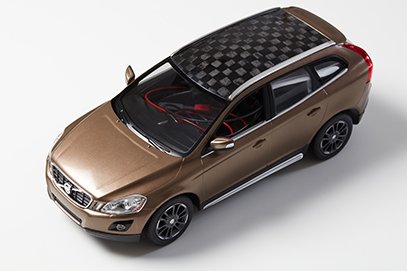
First carbon series roof for Audi RS5
Swedish research institutes present the first model car with a roof made of a composite using carbon fibre based 100% on softwood lignin.

16th February 2016
Innovation in Textiles
|
Stockholm
The Swedish research institutes Innventia and Swerea are now able to present the first model car with a roof made of a composite using carbon fibre based 100% on softwood lignin.
In cooperation with researchers from KTH, the car has also been equipped with a battery in which lignin-based carbon fibre is used as the electrode material. The car is toy size, a demonstrator manufactured on a small pilot scale, but this is a major step towards realising the vision of new lightweight materials from the forest as part of the future bioeconomy, according to researchers.
Carbon fibre composites are strong and light, with many applications. Today, demand is mainly limited by the high cost. As a result, carbon fibre is currently used primarily in products where performance is the priority.
Lignin is a by-product of paper pulp manufacturing and can be produced cost-effectively. Using lignin could lead to significantly increased access to a raw material that is also biobased. Even ordinary cars and other everyday products could be produced from carbon fibre. Lighter cars lead to lower fuel consumption or longer ranges for electric cars.
In 2014, Innventia and Swerea launched a plan for how Swedish lignin-based carbon fibre could be available within a ten-year period. The next step, according to researchers, is a process line on a pilot scale with continuous production in order to identify the challenges that always arise when scaling up. In addition, larger quantities of carbon fibre are required to evaluate composites and composite components.
“Further efforts are required to achieve our goal. This demonstrator is a clear example of how cooperation between our test beds and R&D infrastructure helps us to move forward. Our work on various projects is aimed at using lignin in as valuable a way as possible,” explained Per Tomani, Team Leader for Lignin & Carbon Fibres at Innventia.
“Alongside this development, intensive work is also taking place to develop the existing manufacturing methods for carbon fibre composites,” said Birgitha Nyström, Research Manager in Materials Engineering at Swerea SICOMP.
“We believe in the large-scale production of lightweight materials, and the manufacturing methods for composites must therefore become more cost-effective. There is no reason to believe that it will not prove possible to replace today’s fossil-based carbon fibres with lignin-based carbon fibre in these manufacturing processes.”

Business intelligence for the fibre, textiles and apparel industries: technologies, innovations, markets, investments, trade policy, sourcing, strategy...
Find out more